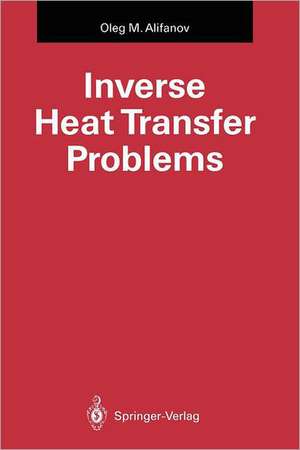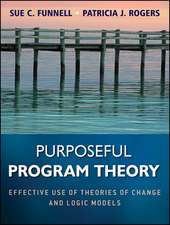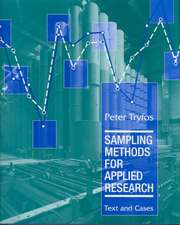Inverse Heat Transfer Problems: International Series in Heat and Mass Transfer
Autor Oleg M. Alifanoven Limba Engleză Paperback – 22 noi 2011
Preț: 643.65 lei
Preț vechi: 757.24 lei
-15% Nou
Puncte Express: 965
Preț estimativ în valută:
123.17€ • 131.70$ • 102.69£
123.17€ • 131.70$ • 102.69£
Carte tipărită la comandă
Livrare economică 18 aprilie-02 mai
Preluare comenzi: 021 569.72.76
Specificații
ISBN-13: 9783642764387
ISBN-10: 364276438X
Pagini: 364
Ilustrații: XII, 348 p.
Dimensiuni: 155 x 235 x 25 mm
Greutate: 0.51 kg
Ediția:Softcover reprint of the original 1st ed. 1994
Editura: Springer Berlin, Heidelberg
Colecția Springer
Seria International Series in Heat and Mass Transfer
Locul publicării:Berlin, Heidelberg, Germany
ISBN-10: 364276438X
Pagini: 364
Ilustrații: XII, 348 p.
Dimensiuni: 155 x 235 x 25 mm
Greutate: 0.51 kg
Ediția:Softcover reprint of the original 1st ed. 1994
Editura: Springer Berlin, Heidelberg
Colecția Springer
Seria International Series in Heat and Mass Transfer
Locul publicării:Berlin, Heidelberg, Germany
Public țintă
ResearchCuprins
1. Statements and Use of Inverse Problems in Studying Heat Transfer Processes and Designing Engineering Units.- 1.1 Introduction to the problem.- 1.2 Simulation of Heat Transfer Processes.- 1.3 Inverse Heat Transfer Problems (IHTP).- 1.4 Practical Applications and the Role of Inverse Problems in Thermal Investigations.- 1.5 The Contents and Structure of the Book.- 1.6 Summary.- 2. Analysis of Statements and Solution Methods for Inverse Heat Transfer Problems.- 2.1 Inverse Problems Formulation and Stability of Their Solution.- 2.2 Existence of Inverse Problem Solutions.- 2.3 Uniqueness of Solution of Inverse Heat Conduction Problems.- 2.4 Degree of Instability of a Boundary Inverse Heat Conduction Problem..- 2.5 Conditionally-Well-Posed Statement of Inverse Problems.- 2.6 Regularization Principles of Ill-Posed Inverse Problem Solutions.- 2.7 Summary.- 3. Analytical Forms of Boundary Inverse Heat Conduction Problems.- 3.1 Determination of Transient Boundary Conditions in a One-dimensional Case.- 3.2 Recovery of Boundary Conditions with a Differential Method of Measurement.- 3.3 Analytical Forms of Multidimensional Inverse Problems.- 3.4 Statement of a Two-Dimensional Inverse Problem.- 3.5 Fictitious Boundary Method for Solving Inverse Boundary Problems.- 3.6 Summary.- 4. Direct Algebraic Method of Determining Transient Heat Loads.- 4.1 The Recurrent Algorithm Construction.- 4.2 The Boundary Condition Recoverability.- 4.3 Step Regularization Principle and Limits of Method Applicability.- 4.4 The Solution of an Inverse Heat Conduction Problem Using Some Other Methods of Approximation and with Disturbed Data.- 4.5 Algorithmic Presentation of a Two-Dimensional Inverse Heat Conduction Problem.- 4.6 Summary.- 5. Solution of Boundary Inverse Heat Conduction Problems by Direct Numerical Methods.- 5.1 Construction of Difference Algorithms.- 5.2 Stability Criterion of the Difference Method for Solving a Boundary Inverse Problem.- 5.3 Investigation into the Stability of Numerical Solution for Inverse Problems.- 5.4 An Implicit Scheme for Inverse Problem Numerical Solution.- 5.5 Artificial Hyperbolization of the Heat Conduction Equation in Solving a Boundary Inverse Problem.- 5.6 Summary.- 6. The Extremal Formulations and Methods of Solving Inverse Heat Conduction Problems.- 6.1 A Boundary Inverse Problem in the Extremal Statement.- 6.2 The Iterative Regularization Principle.- 6.3 Parametric Optimization in Solving Inverse Problems.- 6.4 Gradient Methods of Parametric Optimization.- 6.5 Functional Optimization in Inverse Problems.- 6.6 The Selection of Approximate Solution and the General Appraisement of Gradient Methods.- 6.7 Iterative Algorithms for Solving a Linear Inverse Problem.- 6.8 Experimental Investigation of Algorithms.- 6.9 Numerical Determination of Heat Loads Under Varying Thermophysical Properties of the Body.- 6.10 Solution of a Non-Linear Inverse Problem in Statement II.- 6.11 The Iteration Technique of Determining Non-Stationary Heat Loads in the Two-Dimensional Case.- 6.12 Summary.- 7. Regularization of Variational Forms of Inverse Heat Conduction Problems.- 7.1 The Regularized Form of Inverse Problems.- 7.2 The Construction of a Regularizing Operator.- 7.3 Regularization of the Inverse Problem Finite-dimensional Form.- 7.4 The Admissible Degree of Smoothing and Approximation Sampling Procedures.- 7.5 The Reconstruction Accuracy Analysis of Boundary Heat Conditions.- 7.6 By-Interval Regularization of a Nonlinear Inverse Problem.- 7.7 Regularized Continuation of the Solution of a Nonlinear Heat Conduction Equation.- 7.8 The Regularization of a Two-Dimensional Inverse Problem.- 7.9 Summary.- 8. Iterative Regularization of Inverse Problems.- 8.1 On the Rigorous Basis of the Iterative Regularization.- 8.2 General Formulation and Integral Forms of Linear Inverse Heat Conduction Problems. Gradient of the Residual Functional.- 8.3 The General Formulation of Nonlinear IHCP. The Problem for an Increment of Temperature Field.- 8.4 Adjoint Problems and Gradient of a Functional.- 8.5 Gradient Algorithms with Regard to a Priori Information.- 8.6 Examples of the Construction of the Algorithms for the Solution of Inverse Problems.- 8.7 Computational Experiments.- 8.8 Summary.- Conclusion.- Additional Bibliography.















